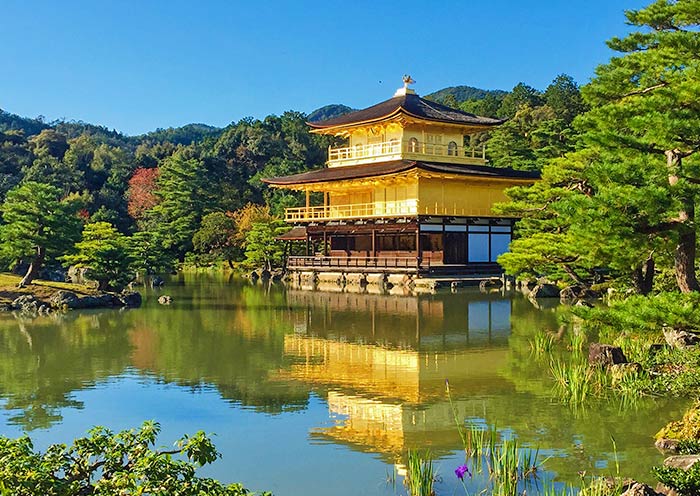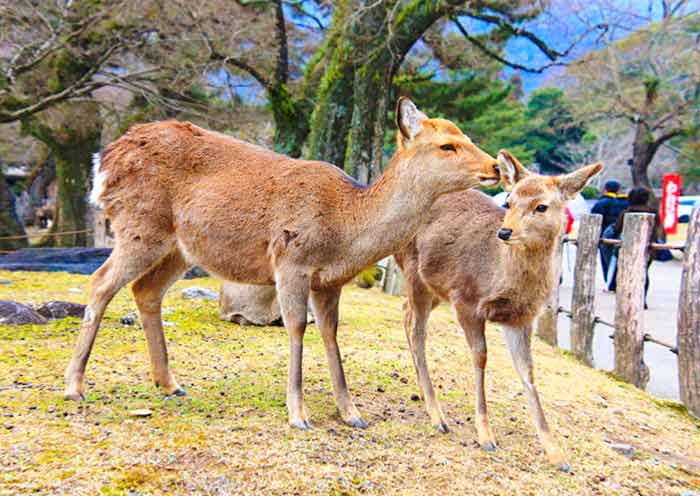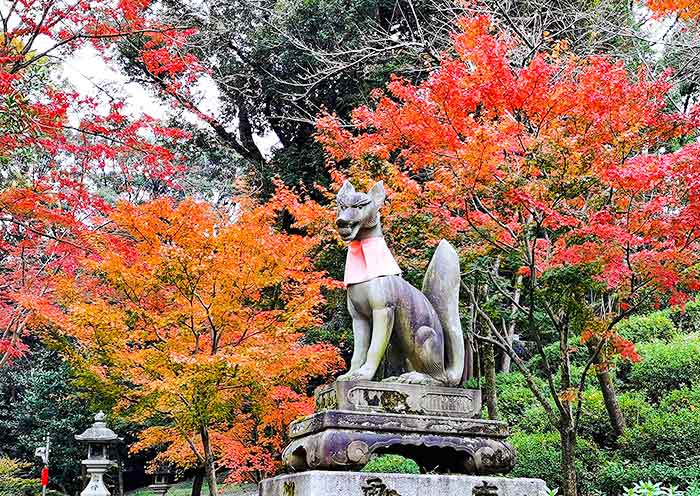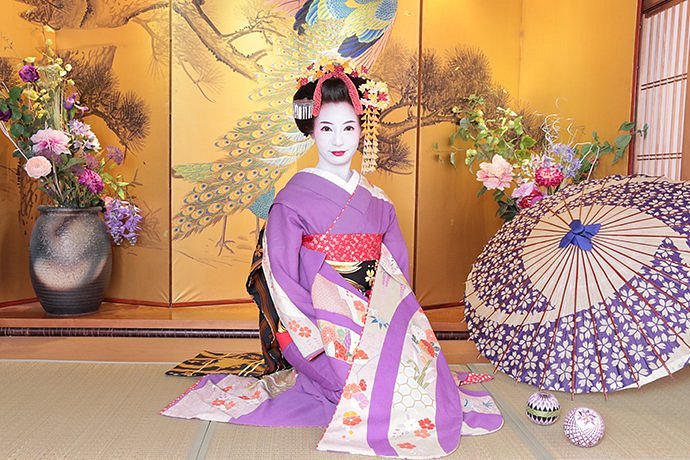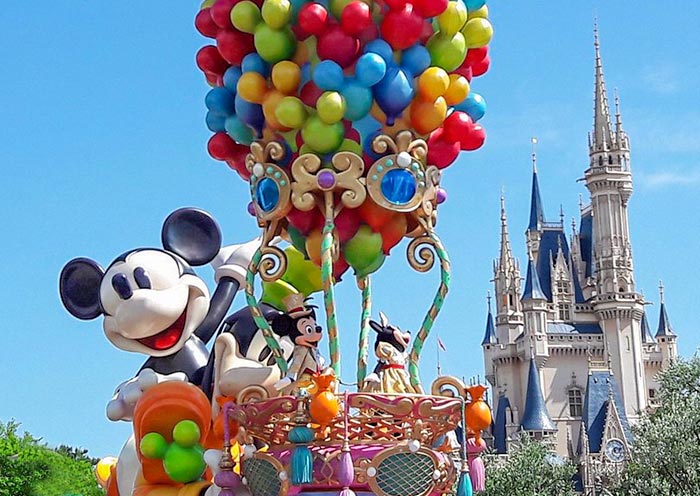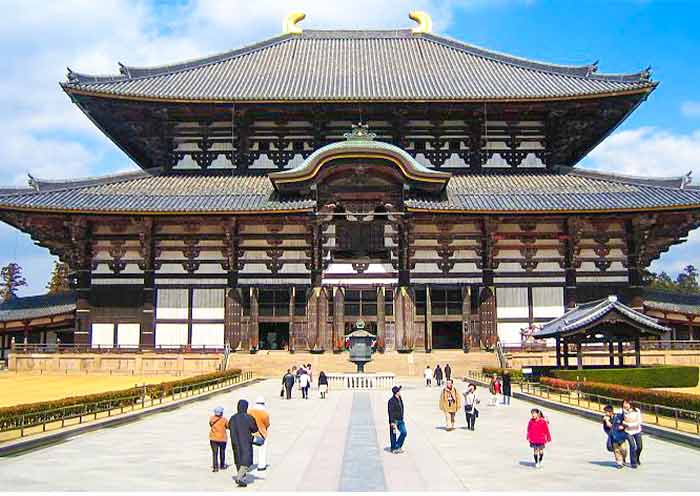Our 8 days group tour in December was amazing! Tokyo’s vibrant streets and Mount Fuji’s snow-capped beauty were breathtaking. Kyoto’s temples and Nara’s deer park offered a serene charm, while Osaka dazzled with its food and nightlife. Hiroshima’s Peace Memorial Park was deeply moving. The crisp winter atmosphere and festive illuminations added a magical touch. Traveling with a small group made the experience fun, seamless, and unforgettable!
7 Days Japan Kansai Tour with Hiroshima: Osaka, Kyoto, Uji & Nara
From
USD 2260![]()
- This is the price per person, based on a group of 6 people, 4-star hotel accommodation, and travel during the regular season.
- Early-bird rates apply to bookings made at least 6 months prior to the departure date.
- The price is subject to change depending on your travel season, group size, hotel class, and potential fluctuations in currency exchange rates.
- Highlights
- Itinerary
- Price
- Trip Notes
- Accommodation
- Photos
- Reviews
7 Days in Kansai with a Day in Hiroshima
If you have only one week to explore a single region in Japan, the Kansai area is a natural choice. It has been Japan's cultural and political center for centuries. No other region has as many historical and cultural sites in such a small area.
Our "7 Days Japan Kansai Tour with Hiroshima" starts in Osaka, where Kansai International Airport is located, and visits nearby Kyoto, Nara, and Uji, with a day trip to Hiroshima. From the modern cityscape of Osaka to the rich cultural heritage of Kyoto, Uji, and Nara, and the historical testimony of Hiroshima, each destination offers a unique perspective and experience of Japan.
Start your adventure in Osaka, a lively and colorful economic hub. Visit landmarks like Osaka Castle and enjoy the vibrant atmosphere of Dotonbori. Head to Kyoto, the ancient capital of Japan. Kyoto is a symbol of Japanese culture with 17 UNESCO World Heritage sites. You'll have the opportunity to visit famous temples and shrines. In the Gion region, you might even see real geisha. Take a scenic train ride to Kyoto's western suburbs, Arashiyama, to experience the seasonal changes.
Experience the unique tea culture in Uji, famous for its high-quality matcha. Continue to Nara, Japan's first permanent capital, where you can visit Nara Park with its friendly deer and the impressive Todai-ji Temple. Visit Hiroshima for a day of reflection at the Hiroshima Peace Memorial Park and the A-Bomb Dome. Optionally, you can extend your visit to Miyajima Island to see the floating torii gate of Itsukushima Shrine.
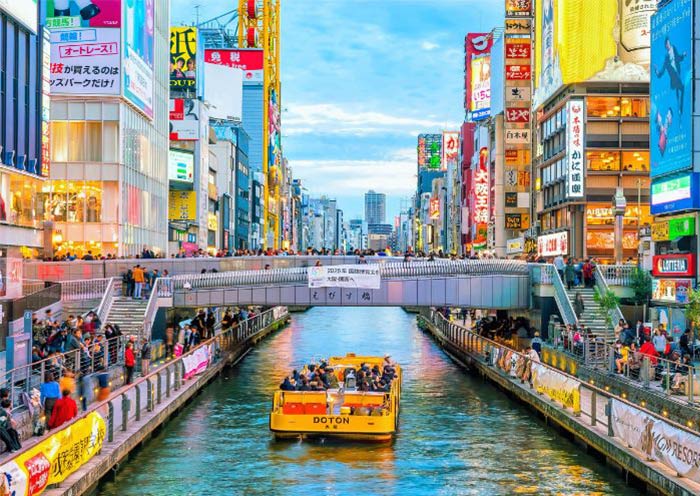
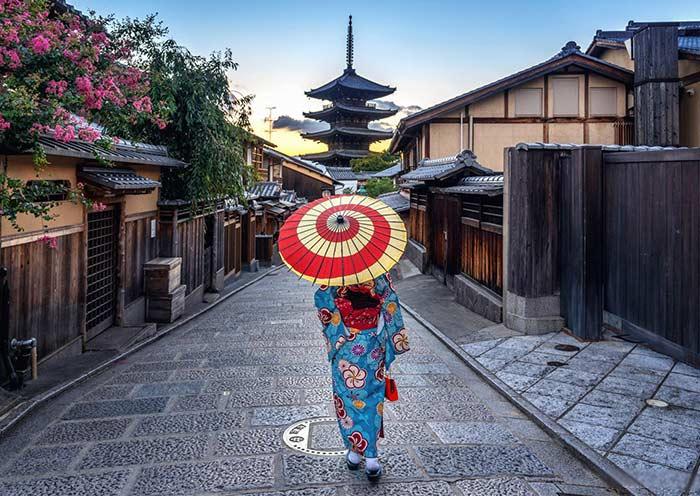
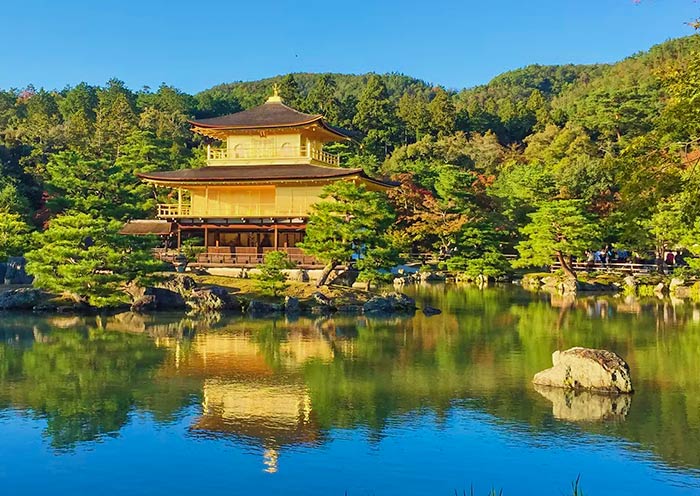



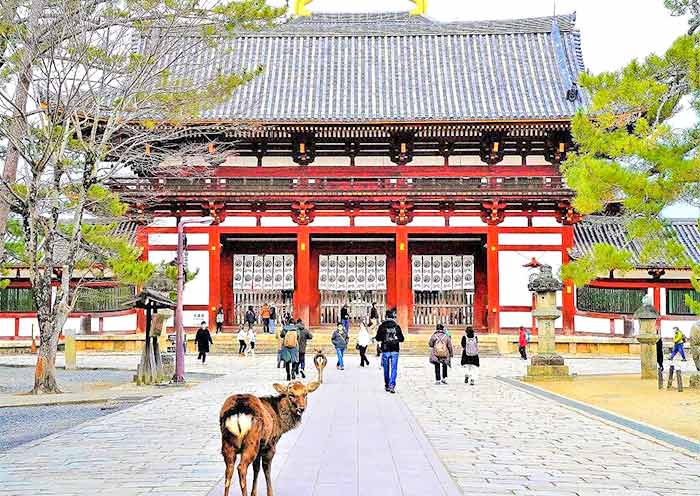
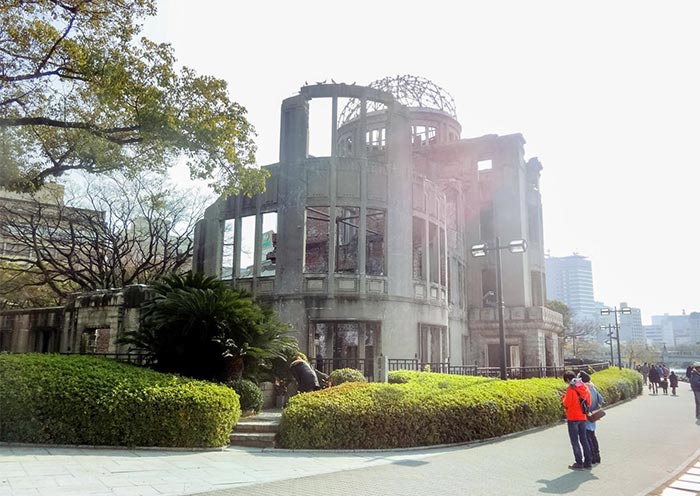
Itinerary at a Glance
Osaka (1 Day)
Airport Pick-up
Kyoto (2 Days)
Fushimi Inari Taisha Shrine, Kiyomizudera Temple, Ninenzaka & Sannenzaka, Yasaka Shrine, Gion, Kinkakuji Temple, Sagano Scenic Railway, Arashiyama Bamboo Grove, Tenryuji Temple, Togetsukyo Bridge
Uji (0.5 Day)
Uji Matcha street, Byodoin Temple, Uji River (Uji Bridge)
Japan Nara (0.5 Day)
Todaiji Temple, Nara Park, Kasuga Taisha
Hiroshima (1 Day)
Hiroshima Peace Memorial Park (Atomic Bomb Dome, Hiroshima Peace Memorial Museum), Itsukushima Shrine
Osaka (2 Days)
Osaka Castle Park, Shinsaibashi-suji Shopping Street, Dotombori District
Itinerary Day by Day
Welcome to Japan! Upon your arrival at Osaka's Kansai International Airport, our representative will greet you with a sign bearing your name right at the arrivals gate. Then drive about 1 hour to your carefully selected hotel in Kyoto. Check into your hotel and take some time to settle in and refresh. The rest of today is free for you to explore the local surroundings at your own pace.
Kyoto, located in the Kansai region of the country, was once the capital of Japan. It epitomizes ancient Japan and is famous for tranquil temples, exquisite gardens, colorful shrines, grand imperial palaces, and ornate castles. Boasting 17 UNESCO World Heritage sites, over 1,000 Buddhist temples, and more than 400 Shinto shrines, Kyoto is among the world's most culturally rich cities. It's also known for traditional Japanese arts and practices, such as tea ceremonies, kaiseki dining (a traditional multi-course meal), and ikebana (flower arranging). It remains one of the best places to see geishas, who are traditional Japanese female entertainers known for their refined skills in arts, music, dance, and conversation.
Arrival Ideas:
By Flight: Kansai International Airport (KIX) is the main international gateway to the Kansai region of Japan. It hosts direct flights from major cities across Asia, Europe, North America, and Australia. In addition to international routes, KIX offers a wide range of domestic flights connecting Osaka with major Japanese cities like Tokyo, Sapporo, Okinawa, and Fukuoka. Osaka International Airport, commonly known as Itami Airport (ITM), is located closer to Osaka and primarily handles domestic flights.
By Shinkansen (Bullet Train): Shin-Osaka Station is the city’s shinkansen station. It can be reached via a short train ride from major cities like Tokyo, Nagoya, Hiroshima, and Fukuoka, making it a convenient option if you’re traveling from other parts of Japan.
Free Time Ideas in Kyoto
- Visiting Nishiki Market, known as "Kyoto's Kitchen". It is an excellent way to spend your free time, especially if you have an interest in Japanese food culture and local delicacies.
- Evening Stroll Along the Kamo River: This river flows through the city and provides walking paths with beautiful views. Many cafes and restaurants along the river have terraces, perfect for a relaxing end to your day.
- Walk the Philosopher's Path: Enjoy a peaceful walk along the Philosopher’s Path, a stone path lined with cherry trees that follows a canal in northeastern Kyoto. This path is especially beautiful during cherry blossom season but offers a serene experience year-round.

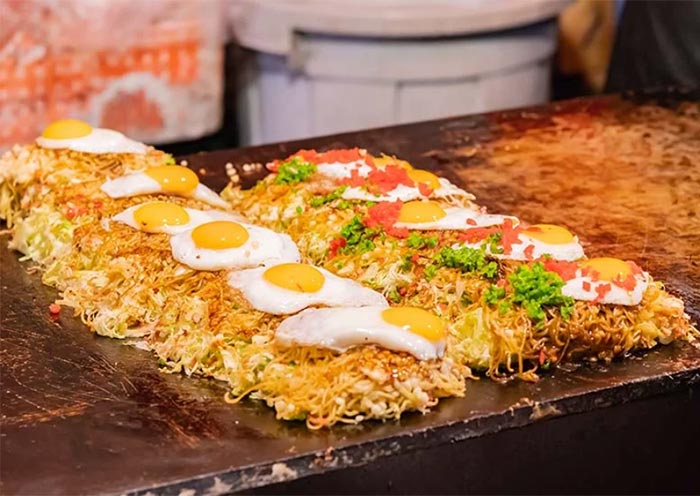
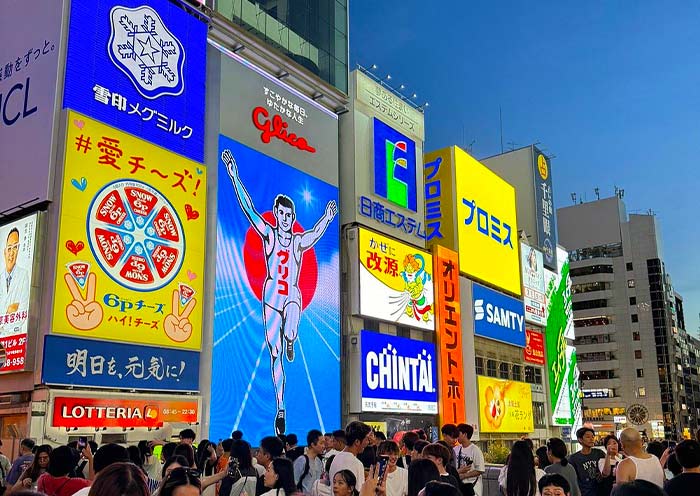

Kyoto, once the capital of Japan, epitomizes ancient Japan. Boasting 17 UNESCO World Heritage sites, over 1,000 Buddhist temples, and more than 400 Shinto shrines, Kyoto is among the world's most culturally rich cities. Known for traditional arts like tea ceremonies, kaiseki dining, and ikebana (flower arranging), Kyoto is also one of the best places to observe geishas.
Start morning in Kyoto bright and early at one of its most iconic sites - the Fushimi Inari Taisha Shrine to beat the crowds.
Fushimi Inari Taisha Shrine is famous for its thousands of vermilion torii gates, known as Senbon Torii (“thousands of torii gates”). Layers upon layers of vermilion torii gates line the lush, wooded hillside, forming a seemingly endless corridor. The vibrant orange and black gates contrast beautifully with the surrounding greenery, creating a visually stunning and almost otherworldly path that is highly photogenic.
Fushimi Inari Taisha was founded in the early 8th century (711 AD) and is primarily dedicated to Inari, the Shinto god of rice, fertility, sake, agriculture, and industry. As you explore the shrine, you will encounter hundreds of fox statues. Said to be the messengers of the god Inari, who is associated with cereal grains, these fox statues often symbolize the deity. Many of these fox statues are depicted holding a key in their mouths, which is said to open the granary.
Tips: Hiking to the summit of the mountain and back will take two to three hours, but many people go only as far as the Yotsutsuji intersection because there are fewer torii gates beyond this point. It will take 30 to 40 minutes to reach Yotsutsuji.
Next, visit Kiyomizudera Temple, a UNESCO World Heritage Site. Perched on the hillside of Eastern Kyoto, this temple is renowned for its wooden stage that juts out over the hill, providing stunning views of the city and the surrounding nature. The temple's main hall, constructed entirely without the use of nails, is an architectural marvel. Kiyomizu-dera is also celebrated for its sacred waters, which are believed to have wish-granting powers that draw countless visitors who come to drink from its stream. Don’t miss the Hondo (Main Hall), Jishu Shrine, the Otowa Waterfall, and the spiritual experience of the Tainai-Meguri room.
Tips: The scenery at Kiyomizu-dera Temple is distinctively beautiful in each season, offering a unique charm year-round. In spring, the mountains are adorned with charming cherry blossoms; in summer, they are lush with vibrant greenery; in autumn, they are decorated with brilliantly colored leaves; and in winter, they are filled with enchanting trees.
Then, walk up the well-preserved streets of Ninenzaka and Sannenzaka. These charming, sloping streets are lined with traditional shops and quaint tea houses, offering a nostalgic glimpse into Kyoto's past. As you stroll through these areas, you can shop for unique crafts, sample local snacks, and perhaps stop at a café to relax and soak in the atmosphere of old Kyoto.
Continue to Yasaka Shrine, the guardian shrine of the Gion entertainment district, which dates back over 1350 years. Yasaka Shrine is particularly favored by those seeking beauty and wealth. Visiting this significant Shinto shrine in Kyoto, you may also find yourself gaining some good luck. The shrine is most famous for its Gion Matsuri in July, during which you can witness the procession where the deities of Yasaka are paraded through the city streets.
Adjacent to the shrine, Gion is Kyoto's famous geisha district. Here, you might catch a glimpse of Geisha (Geiko) in their elaborate kimonos and traditional makeup. As you wander through the cobblestone streets of Gion, take a moment to appreciate the beautifully preserved machiya (wooden townhouses), ochaya (teahouses), and exclusive ryotei (traditional Japanese restaurants). Gion is particularly enchanting at dusk when the lanterns are lit and geishas and maiko (apprentice geishas) make their way to evening appointments, making the narrow lanes come alive.
Stay overnight in Kyoto.
Optional Activities:
- Join a Geisha Experience.It offers a chance to see a performance by a geisha, experience the tea ceremony, and learn all about its artful rituals.
- Kyoto traditional kimono experience.Wear a traditional kimono and stroll through scenic districts like Gion or around Kiyomizu-Dera Temple. Enjoy photo opportunities and the feel of traditional Japan.


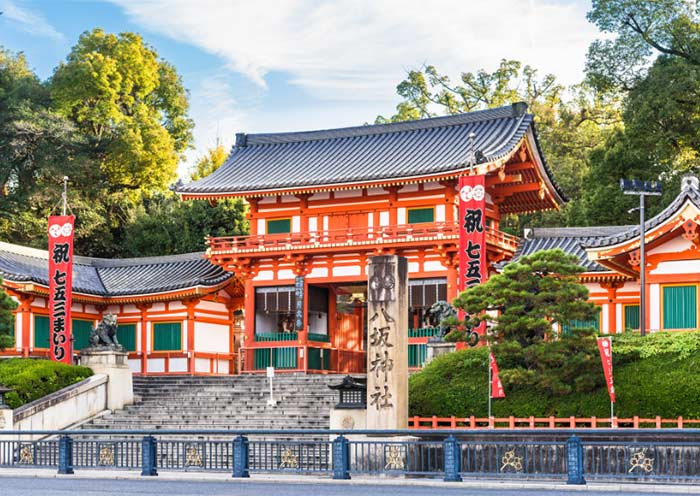

Today, you'll be visiting some of Kyoto's most iconic spots, then head to the Arashiyama and Sagano areas located in the northwest of Kyoto. This itinerary will not only allow you to deeply experience Kyoto's culture and history but also bring you closer to nature, letting you feel the changes of the seasons.
Start your day with a visit to one of Kyoto's most iconic sights, Kinkakuji Temple (Golden Pavilion) - a UNESCO World Heritage site. This Zen Buddhist temple is famous for its stunning golden exterior. The temple's stunning visual appeal comes from its top two floors, which are completely covered in gold leaf. The reflection of the golden structure shimmering in the pond in front of it, makes it perfect for photos and quiet reflection. It was originally built in 1397 as a retirement villa for Shogun Ashikaga Yoshimitsu. After Yoshimitsu's death, as per his will, the villa was converted into a Zen temple by his son.
Next, head to the Arashiyama area in the western part of Kyoto and take a ride on the Sagano Scenic Railway, also known as the “Romantic Train”. It is a sightseeing train line that runs between Arashiyama and Kameoka.On the way, the train runs along the Hozugawa River gorge, offering fantastic views of the forests and mountains. It is particularly scenic during the autumn foliage season, but in the spring passengers can enjoy the cherry blossoms, in the summer a cool breeze and the sound of cicadas, and in the winter dramatic snowy landscapes.
Exit at Arashiyama Station and walk to the nearby Arashiyama Bamboo Grove. The famous pathway is surrounded by towering bamboo, which creates an otherworldly atmosphere. This path leads you through one of Kyoto's most photographed landscapes.
After a short walk, explore Tenryuji Temple which is designated as a UNESCO World Heritage Site and is one of the so-called Kyoto Gozan or "five great Zen temples of Kyoto". Don't miss the garden, designed by the famous Zen master Muso Soseki, which reflects the concept of shakkei ("borrowed landscape"). Tips: The temple and its gardens are particularly beautiful during the cherry blossom season in spring and the colorful foliage season in autumn.
Conclude your visit to Arashiyama by walking to the Togetsukyo Bridge, an iconic historical wooden bridge offering picturesque views of the surrounding mountains and river, encapsulating the tranquil beauty of the area.
After the tour, drive back to Kyoto downtown. Stay overnight in Kyoto.

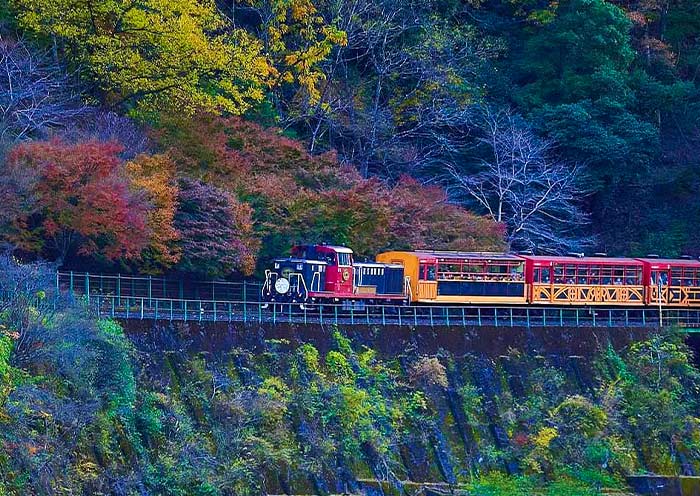

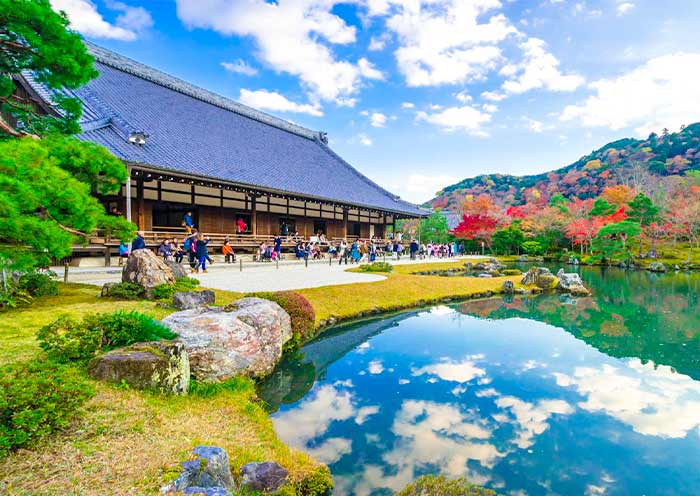
Today, you will depart from Kyoto to Osaka. Along the way, you will visit Nara and Uji to make the most of your day.
Driving to Uji takes about 40 minutes. Uji is renowned for its green tea and is the perfect spot to delve into traditional Japanese tea culture. In the 7th century, Buddhist monks introduced green tea from China to Japan. Initially, monks ground the leaves into a powder to help them stay awake during long periods of meditation. It wasn't until the Kamakura period (1192-1333) that it became a popular beverage. Gradually, green tea powder became a vital ingredient in the tea ceremony, especially popular among the aristocracy.
Visit Byodoin Temple, a Buddhist temple from the Heian period, now listed as a World Heritage Site. Its most famous structure, the Phoenix Hall, is depicted on the Japanese ten-yen coin. Inside the hall, you can find many valuable artworks and relics, including a designated National Treasure, and the statue of Amida Buddha.
The street leading to Byodoin Temple, spanning 300 meters, is Uji's busiest Matcha street, lined with restaurants on both sides. No matter what delicacy you indulge in - be it ice cream or sweets - the unique aroma of green and roasted tea permeates the air. Japan's oldest tea shop is located in Uji.
Uji also has a river sharing the city’s name, the Uji River, which divides the town in two. You can take a leisurely stroll along the river, and visit Uji Bridge, an important setting in the Tale of Genji, now one of Kyoto’s most romantic spots.
Optional Activities: If you want to experience the joy of tea-making firsthand, consider joining a tea workshop in Uji. Learn how to prepare tea, how to grind matcha to perfect fineness, and sample different tea beverages.
After finishing your tour of Uji, head to Nara, just 50 minutes away. Nara holds a special place in Japanese history as the country's first permanent capital, predating Kyoto. Nara boasts eight World Cultural Heritage sites, making it Japan's second most culturally rich city after Kyoto.
Visit Todaiji Temple, one of Japan's most historically significant temples and a UNESCO World Heritage site. It is known for housing the world’s largest bronze statue of the Buddha Vairocana, which stands just over 16m high and consists of 437 tonnes of bronze and 130kg of gold. It represents Vairocana Buddha and is flanked by two Bodhisattvas. Todaiji's main hall, Daibutsu-den (Big Buddha Hall), is one of the world’s largest all-wood buildings, despite the fact that the present reconstruction of 1692 is only two-thirds of the original temple hall's size.
Walk to Nara Park, adjacent to Kasuga Taisha. This park is famous for its hundreds of freely roaming deer, considered messengers of the gods in Shinto tradition. Purchase some shika senbei (deer crackers) to feed the deer as you stroll through the park.
Head to Kasuga Taisha (Kasuga Grand Shrine), Nara’s most celebrated Shinto shrine, another UNESCO World Heritage Site. It is renowned for its lanterns, which have been donated by worshippers. Hundreds of bronze lanterns can be seen hanging from the buildings, while thousands of stone lanterns line its approach and the surrounding woods. These lanterns are lit twice a year during the Lantern Festivals in February and August, creating an ethereal and mesmerizing atmosphere.
After the tour, drive to Osaka (typically takes around 50 minutes) and stay overnight.

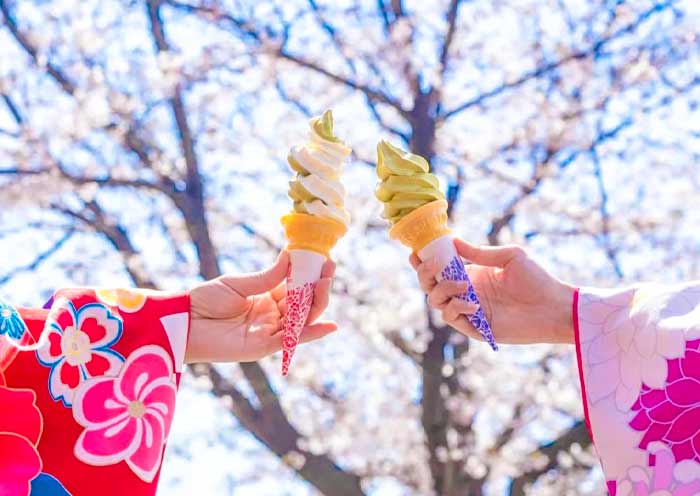

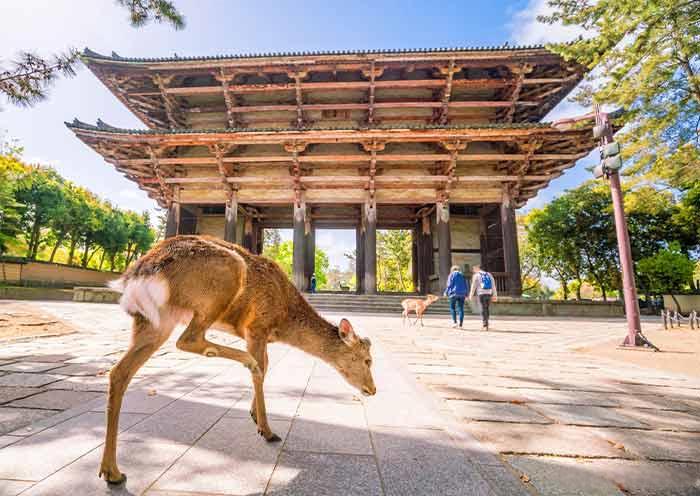
Osaka, Japan's third-largest city and a major economic hub, is renowned for its rich history, diverse cuisine, distinctive culture, and robust economic strength. The city's unique sense of humor and open personality make it an exceptionally interesting place, more colorful than most cities. Acres of concrete are covered with dazzling neon lights and brightly colored storefronts. Osaka is a city that loves to eat, known as the "nation's kitchen." It boasts a wide variety of culinary delights.
Start your day at Osaka Castle Park, one of Japan’s most famous landmarks and a symbol of Osaka’s historical grandeur. Originally built in 1583 by Toyotomi Hideyoshi, a powerful daimyo who aimed to unify Japan, it was the largest castle of its time. After multiple renovations and reconstructions, today's Osaka Castle has been transformed into an open park, covering a total area of 105.6 hectares, making it a must-visit attraction.
Walking into the scenic area of Osaka Castle, you'll be amazed by the massive scale and precision of the moats, gates, and stone walls. The largest stone slab is 11 meters wide, and many stones are inscribed with the crests of the 64 daimyō (feudal lords) tasked with the castle’s construction back in 1620. The most breathtaking feature is the Main Tower (Tenshukaku) of Osaka Castle, which stands tall against the sky at the center of the extensive castle grounds. The castle tower's interior is a museum showcasing artifacts related to Toyotomi Hideyoshi and the castle's history. The observation deck on the 8th floor offers a panoramic view of Osaka Castle Park and the Osaka Plain.
Optional Activity: Take some time to stroll through the Nishinomaru Garden, which offers a picturesque setting with over 600 cherry trees and beautiful views of the castle tower from below. This is especially enchanting during the cherry blossom season, which usually occurs in late March and/or early April.
In the afternoon, you will experience the unique charm of the city through a street food and shopping tour. Enjoy shopping at Shinsaibashi-suji Shopping Street, Osaka's busiest shopping arcade. Then, head to the lively district of Dotonbori, where waterways are lined with luminous advertisements and signs. It's especially glitzy during the holiday season, with decorations strung across the bridges. Full of fantastic restaurants, clubs, and karaoke bars, it's the city's go-to area for entertainment. Take a photo at the iconic Glico Man sign. Try takoyaki, ball-shaped octopus bites, kushikatsu (Japanese deep-fried skewered meat and vegetables), and okonomiyaki, a savory Japanese pancake topped with whatever you like.
Optional Activities:
Kamigata Ukiyoe Museum offers a fascinating glimpse into the traditional Japanese art form of ukiyo-e.
Shinsekai (New World) & Tsutenkaku Tower: Shinsekai, meaning "New World," is a nostalgic and unique shopping district in Osaka, known for its retro vibe, old-school charm, and vibrant atmosphere. Originally built in 1912, Tsutenkaku Tower offers views of the Osaka skyline and is located in the retro-themed Shinsekai area.




Today, you will head to Hiroshima, a modern city featuring broad, tree-lined boulevards, meandering rivers, and a bustling city center. While Hiroshima is perhaps best known for being the target of an atomic bomb attack near the end of World War II, the city is not defined by this tragic history. Instead, it has continually advocated for peace and understanding.
Note:
The distance between Osaka and Hiroshima is about 300 kilometers. A Shinkansen (Bullet Train) journey takes approximately 1.5–2 hours, while driving takes 4–5 hours. To optimize time and costs, we will arrange for a guide to accompany you on the Shinkansen journey between the cities, and you'll explore urban areas using public transportation (with actual transportation costs paid on-site).
Start your day early as your guide picks you up from your hotel in Osaka. The guide will assist you to the train station to board the Shinkansen (bullet train) and accompany you to Hiroshima.
Upon arrival in Hiroshima, proceed to the Hiroshima Peace Memorial Park. The park is dedicated to the victims of the atomic bomb in 1945 and is a poignant reminder of the costs of war. Hiroshima Peace Memorial Park has numerous monuments and the iconic Atomic Bomb Dome.
The Atomic Bomb Dome, officially known as the Hiroshima Peace Memorial, is one of the most iconic structures in the Hiroshima Peace Memorial Park. Originally serving as the Hiroshima Prefectural Industrial Promotion Hall, it is known for its distinctive European-style dome. On August 6, 1945, it was struck by an atomic bomb, and the dome was directly beneath the bomb's hypocenter, approximately 160 meters above ground. While the surrounding area was almost destroyed, parts of the building's structure miraculously survived, standing as a direct testament to the destructive power of the bomb. In 1996, the A-Bomb Dome was designated as a UNESCO World Heritage Site, symbolizing peace and serving as a warning against nuclear warfare.
Explore the Hiroshima Peace Memorial Museum to learn about the events leading up to the bombing, its devastating effects on the city's inhabitants, and the city’s post-war recovery. The museum holds exhibits that include personal items from victims, photographs, and other significant artifacts.
Today, if time allows, you can visit the island of Miyajima, a revered sacred site known for its breathtaking scenery and the famous floating torii gate of Itsukushima Shrine. On the short ferry ride there, you'll see the renowned Itsukushima Shrine, which is situated on Miyajima. At high tide, it appears to float on the sea. It has been designated as a UNESCO World Heritage Site and is among Japan's most celebrated tourist attractions. Be sure to stand on the deck to get a good view of the giant red Torii gate rising out of the sea.
After the tour, board the Shinkansen back to Osaka with your guide. Stay overnight in Osaka.
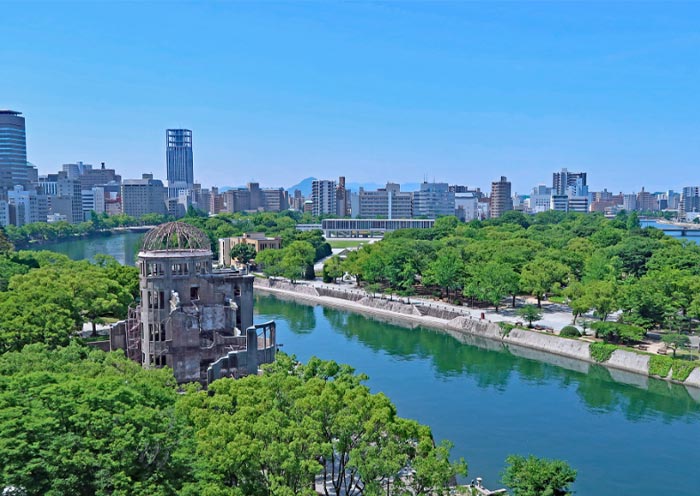



It is time to end your unforgettable 7 Days Japan Kansai Tour with Hiroshima. Your driver will ensure a smooth transfer to Kansai International Airport (KIX) or Kansai International Airport (KIX) for your departure flight.
Trip Extension: If you'd like to extend your adventures in Japan, consider exploring other notable regions like Tokyo, Mt. Fuji, Hakone, etc. Feel free to contact us to customize your extended itinerary.
Thank you for choosing Asia Odyssey Travel for your tour of Asia. We are dedicated to enhancing your travel experiences and look forward to welcoming you on your next adventure in Asia. Have a safe journey home!


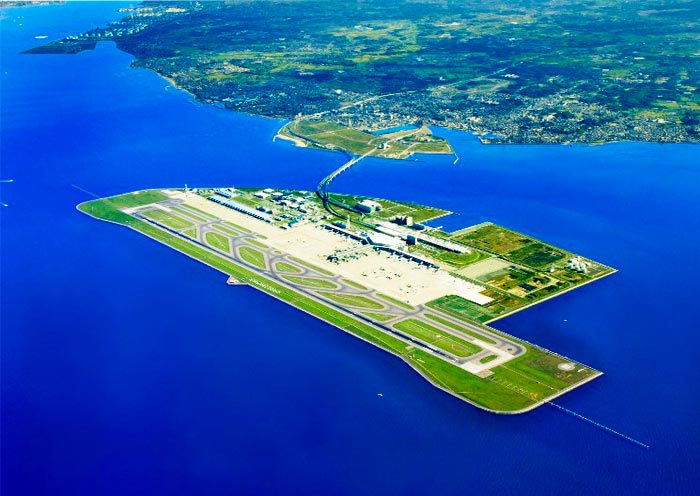

Explore Tour Costs and Request a Free Quote
| Number of People | Regular Season | Spring Season | Autumn Season | Book Tour |
|---|---|---|---|---|
| (Jan, Feb, May, Jun, Jul, Aug, Sep) | (Mar, Apr) | (Oct, Nov, Dec) | ||
| 2 Persons | from $3800 pp | from $4490 pp | from $3980 pp | Free Enquiry |
| 4 Persons | from $2600 pp | from $3150 pp | from $2800 pp | Free Enquiry |
| 6 Persons | from $2260 pp | from $2800 pp | from $2400 pp | Free Enquiry |
What’s Included & What’s Excluded
What's Included:
What's Excluded:
Important Travel Tips for Visiting Japan
Get the right visa. Depending on your nationality and the length of your stay, you may need to apply for a visa in advance. You can do this online or at a Japanese embassy or consulate. Many countries are part of Japan’s visa exemption program, allowing their citizens to enter Japan for short stays without a visa for tourism. Always check if your country is on this list before applying for a visa. If you have any questions, feel free to contact our travel experts for more information.
The best time to visit Japan depends on your interests:
Spring (March to May): Ideal
for witnessing the cherry blossoms and enjoying mild weather. Major cities like Tokyo, Kyoto, and Hiroshima
are particularly beautiful as cherry trees bloom spectacularly.
Summer (June to
August): Perfect for experiencing vibrant festivals such as Gion Matsuri in Kyoto,
Tanabata Matsuri across the country, and enjoying the natural beauty of Hokkaido, which is less humid than
the rest of Japan. Note that early summer (June) is the rainy season.
Autumn (September to
November): Offers stunning fall foliage, making it a great time for hiking and temple
visits. The weather is cool and pleasant, ideal for outdoor activities.
Winter (December to
February): The best time for winter sports, especially in regions like Hokkaido and the
Japanese Alps. Onsens (hot springs) are also a popular attraction during the cold months.
Bring Cash. Despite advances in digital payment, many smaller vendors, temples, and rural
areas operate predominantly with cash. It’s wise to keep some yen on hand at all
times.
Universal Travel Adapter. Japan uses 100V with two straight thin
pins.
Passport: Ensure it’s valid for at least six months beyond your date
of travel.
Visa (if required): Make sure you have the right visa for your
travel.
Travel Insurance Information: Always good to have on hand.
Bow when greeting: A slight bow is a common way to say hello, thank you, or
sorry.
Be mindful of your noise level: Japanese culture values quietness,
especially in public transportation and residential areas.
Follow the rules: Whether
it's waiting in line or adhering to signage, following local rules and etiquette is highly
valued.
Etiquette in temples and shrines: Wear modest clothing and follow specific
customs such as washing hands and mouth before entering a shrine or temple. Photography might be restricted
in sacred areas.
Looking for more travel guides for first-time visitors to Japan? Want to gather additional information to plan your trip? Our team of professional travel experts has written over 40 articles about Vietnam. Please check out ourJapan Travel Guide for inspiration and detailed insights.
Hotel Conditions for Your Japan Tour
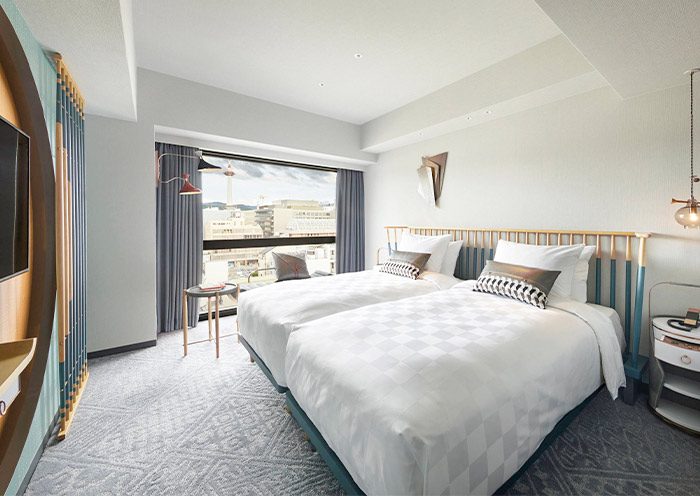


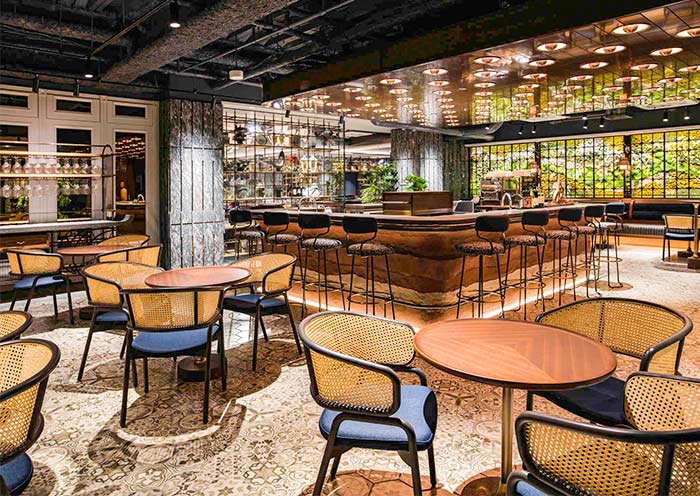
We offer a range of accommodation options to suit various preferences and budgets: luxurious 5-star hotels, comfortable 4-star hotels, and economical 3-star hotels. Our selected hotels are conveniently located close to the city center or popular tourist spots.
For those seeking a more distinctive lodging experience, we also offer Traditional Ryokans, Machiya, Onsen (hot springs) Hotels, etc. If you have specific needs or preferences, please consult with your travel advisor.
Tips: Be aware that hotel room sizes in Japan may be smaller compared to those in other developed countries due to the scarcity of land. If your budget allows, it is recommended to opt for a higher category of hotel, which will generally offer more comfort.
Photo Gallery for This Itinerary
Latest Japan Tours Reviews from Our Customers

Sam Lin
Singapore
Date of Experience: Dec 24, 2024
Tour Customized by: Vincent
You May be Interested in This Tour: 8 Days Best Japan Group Tour: Japan Highlights & Hiroshima

Zhang Xin Hua
Malaysia
Visiting Japan’s Golden Route in October was incredible! From Tokyo's vibrant city life to the serene beauty of Mount Fuji, every stop was unforgettable. Kyoto’s temples and Nara’s friendly deer captured Japan’s charm, while Osaka’s food scene was a delight. The mix of tradition and modernity made it a perfect 7-day journey!
Date of Experience: Oct 26, 2024
Tour Customized by: Allan
You May be Interested in This Tour: 7 Days Japan Golden Route Tour in Small Group

Dan Z
Washington DC
Date of Experience: Aug 24, 2024
Tour Customized by: Rex
You May be Interested in This Tour: 7 Days Japan Kansai Tour with Hiroshima: Osaka, Kyoto, Uji & Nara
Price: From USD 2260 pp
(Based on a private tour for 6 persons staying in 4-star hotels. Prices may vary depending on the itinerary, travel dates, and group size. )
(Book at least 6 months in advance)



